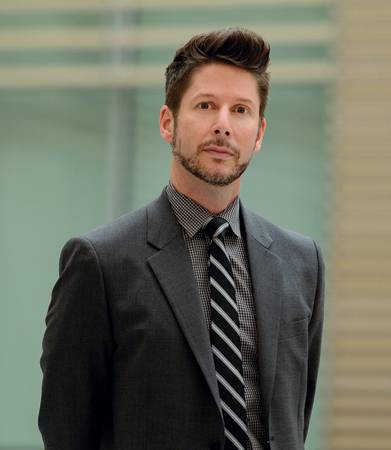1. What's at the top of your to-do list?
I've been charged with enhancing undergraduate student life, and in order to accomplish this, I must develop an understanding of the unique nature of Hopkins students, how we currently serve them, and what their most pressing needs are. As someone who is new to the community, I've been meeting with various groups and attending as many events as possible so I can better understand the Hopkins culture.

Image caption: Kevin Shollenberger
Image credit: Will Kirk / Johns Hopkins University
2. What keeps you up at night?
I worry about the level of stress that students at institutions like JHU are under that can lead to feelings of isolation and depression. We want students to know they are not alone and there are people here to help. At times, we have all needed the help and support of others, and it is not a sign of weakness but rather a sign of strength to ask for help when you need it.
3. What's in store 10 years from now?
We're currently exploring ways to enhance the sense of campus community and lifelong school spirit that our students often highlight as a missing component of their experience. The development of the lot at St. Paul and 33rd streets and the exploration of a future student center are part of this effort, as are many programming efforts. In 10 years, I look forward to seeing a more connected student and alumni community.
4. Tell me something I don't know about Johns Hopkins.
As I've walked around my Bolton Hill neighborhood, I've seen plaques that provide information on the homes and the people who have lived there. I couldn't help but notice that many had connections to Johns Hopkins. What I learned is that the original campus was located between Eutaw and Howard streets, and given Bolton Hill's proximity, many Hopkins notables made it their home. Our first president, Daniel Coit Gilman, lived there, as did two of the four founding doctors of the hospital: Howard Kelly and William Halsted. U.S. President—and JHU alum—Woodrow Wilson also lived in Bolton Hill for a time.
Posted in University News, Student Life







